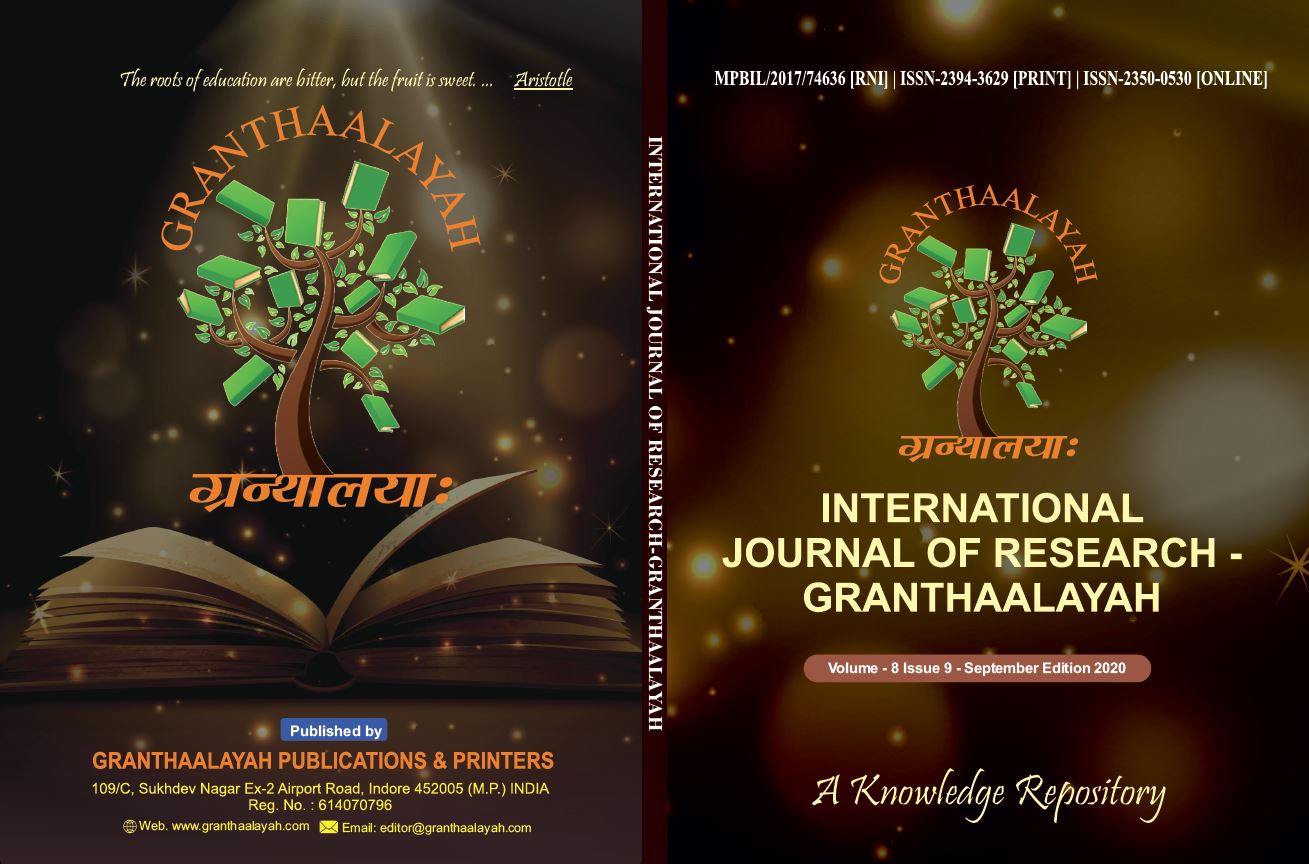HUMAN BEINGS’ BIRTH, DEATH AND BEYOND
DOI:
https://doi.org/10.29121/granthaalayah.v8.i9.2020.1411Keywords:
Panchabhutas, Kundalini, DNA, Electromagnetism, Meteorites, Lokas, Vital Airs, Vital Fires, Pitrayāna, DevayānaAbstract [English]
Everything in the physical creation, including the human body, is composed of the five great natural elements called ‘Panchabhutas’. These elements have originated in a particular order of ‘akāsh’ (ether) to the last element ‘prithivi’ (earth) and the birth as a human being, which is exceedingly rare, is thus born on earth with its matching fundamental frequency of the earth. As the existing literature is quite unclear regarding the human birth, death and beyond, it is attempted to show a plausible way connecting the dots of the process of birth, death, rebirth and liberation based on vibrations of frequency of mind, word, and deed. The final moments of death, step by step, where these pancha- bhutas are dissolved, in the reverse order of their formation, following the chakra system (wheels of energy) of Kundalini in a human being, similar to DNA, withdrawing the soul from the base (mulādhāra) upwards. Subtle bodies (sookshma sarira) and soul have infinite possibilities for their onward journey at the moment of death go to the dimension that corresponds to how one lived one’s life on Earth. The subtle body finds its dimension and level of frequency according to merits of purity of the subtle body derived by one’s life’s activities rise to higher lokas for enjoying the fruits of good actions or attain liberation or to be reborn. An enlightened soul attains liberation from bondage as in the case of Swāmi Vivekānanda, and also has the freedom to be born again or not.
Downloads
References
B. K. Chaturvedi (2015), Vishnu Puran, Diamond Publishers, New Delhi, eISBN 97-893-5083-749-8
Sankshipt Narad Puran (Hindi), Geeta Press Gorakhpur; 1 edition
ASIN: B01M3Z1JQVwww.valmikiramayan.net
Vedic Paradigm
Bhagavat Gita Large Print Edition Sanskrit. The Devanagari text “Sanskrit 2003”, Verse 27. Ch. 2; 2003.
Venkata Subba Rao Yeragudipati (2017), Live Vedanta: Prevent Population Explosion, Lambert Academic Publications, West Germany, ISBN: 978-3-330-32022-2
Bhagavat Gita Large Print Edition Sanskrit. The Devanagari text “Sanskrit 2003”, Verse 26. Ch. 8; 2003.
decodehindumythology.blogspot.com/.../lokas-planets-of-advanced-alie...
Bhat MR. Signs of Meteors Varahamihira’s Brihat Samhita. English Translation. Vol. 1, Ch. 33. Delhi: Motilal Banarsidas Publishers Pvt. Ltd.; 1997. p. 307.
Bhagavat Gita Large Print Edition Sanskrit. The Devanagari text “Sanskrit 2003”, Verse 21. Ch. 9; 2003.
Y. V. Subba Rao. (2020). “FATE AND FREEWILL.” International Journal of Research - Granthaalayah, 8(3), 147-155. https://doi.org/10.5281/zenodo.3733081.
Subba Rao YV. Role of junk DNA in the liberation of soul. Int J Yoga - Philosop Psychol Parapsychol 2015; 3:23-30. DOI: https://doi.org/10.4103/2347-5633.205522
Venkata Subba Rao Yeragudipati (2017), Vedic Paradigm, Lambert Academic Publications, West Germany, ISBN: 978-620-2-00775-7
Bhagavat Gita Large Print Edition Sanskrit. The Devanagari text “Sanskrit 2003”, Verse 3. Ch. 7; 2003.
Swami Vivekananda, life and teachings-belur.www.belurmath.org/swamivivekananda.htm
Rao, Y.H. and Rao, Y.V.S. (2004), “Astrology on the Moving Zodiac – The One System for the East and the West”, Author’s Publication. ISBN 81-7525-939-66 Review: (Extract from ‘ASTROLOGY’, The Astrologers’ Quarterly, England, Vol.56, No.1, Spring 1982)
Rao, Y.H. and Rao, Y.V.S. (2004), “Astrology on the Moving Zodiac – The One System for the East and the West”, Author’s Publication. ISBN 81-7525-939-66 Review: (Extract from ‘ASTROLOGY’, The Astrologers’ Quarterly, England, Vol.56, No.1, Spring 1982)
Published
How to Cite
Issue
Section
License
With the licence CC-BY, authors retain the copyright, allowing anyone to download, reuse, re-print, modify, distribute, and/or copy their contribution. The work must be properly attributed to its author.
It is not necessary to ask for further permission from the author or journal board.
This journal provides immediate open access to its content on the principle that making research freely available to the public supports a greater global exchange of knowledge.

























